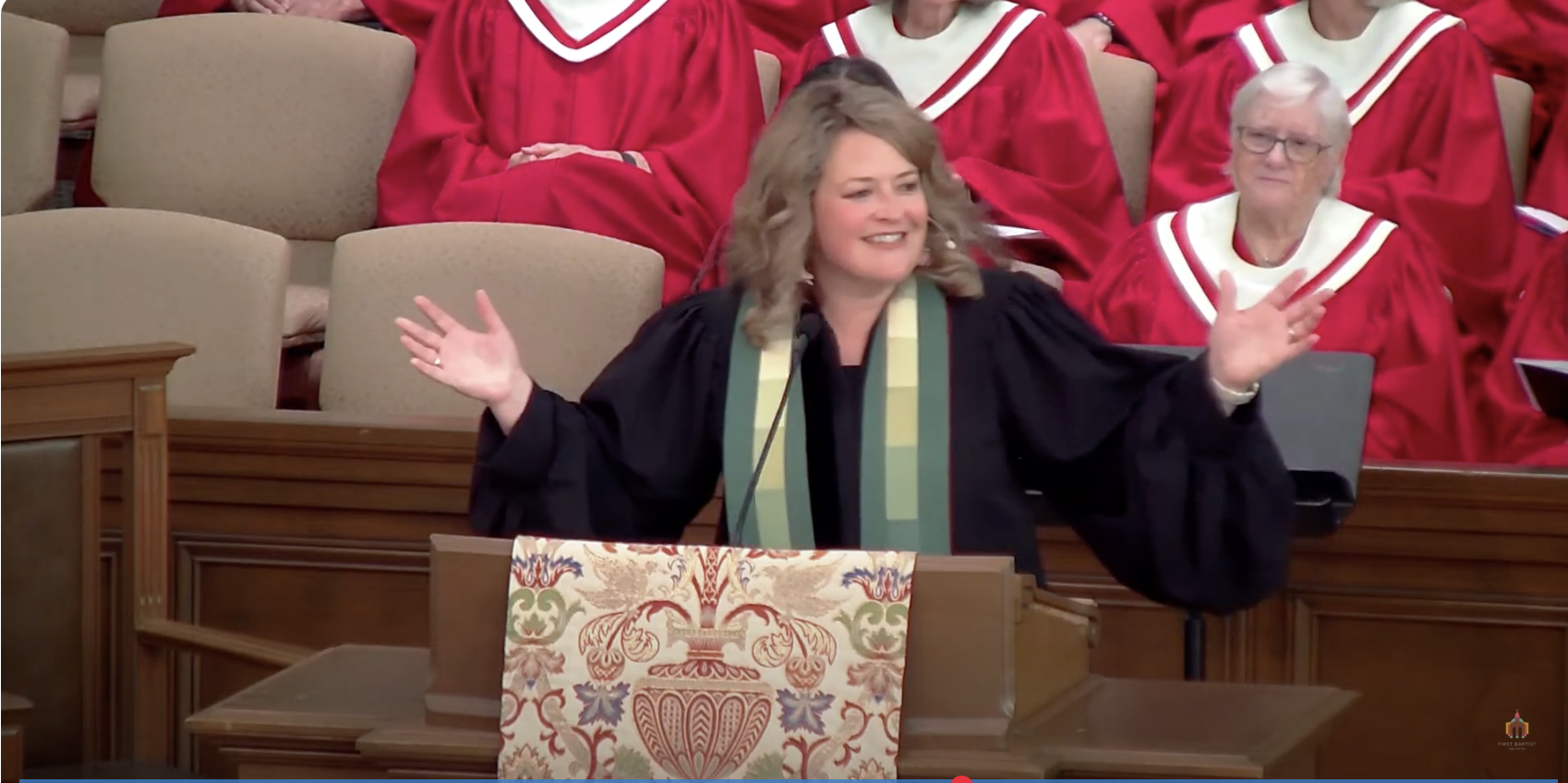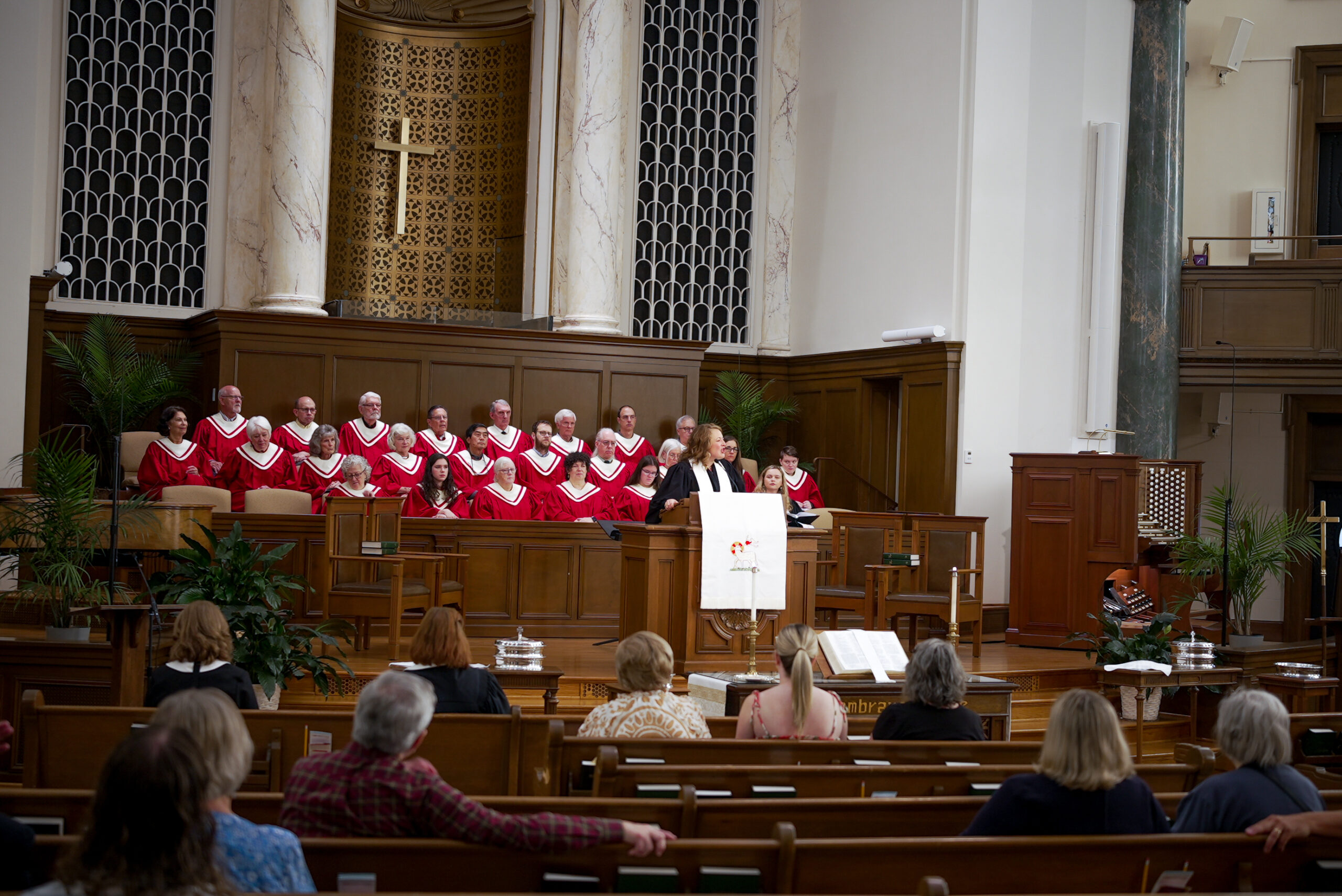I am truly grateful for the invitation to be with you all this morning and to share Midwives of a Movement with you, if you joined us during the Sunday School hour. But more than that I am grateful for the witness of this congregation, for the ways in which you not only affirm, but uplift and elevate women in ministry, and serve as an example for more congregations to do the same.
If you joined us earlier, you heard that on March 20 and 21, 1983, 33 Southern Baptist women gathered in Louisville, Kentucky, at what we now call the first meeting of Baptist Women in Ministry. Part of the legacy of that first meeting is the address that Nancy Hastings Sehested gave standing on the black and white tiled floor of a second floor Sunday school room at Crescent Hill Baptist Church. Nancy was serving as an Associate Pastor of Oakhurst Baptist Church in Decatur, GA at the time, and has been called the prophet, visionary, and mother of our movement.
In her address to the 33 women gathered, she cast a vision, put forth goals, and named strategies and tactics necessary for accomplishing the goals that would realize the vision. But this vision she had was for even more than just the affirmation and elevation of women in ministry.
She said, “The vision is one calling, pleading for a newly reborn and transformed image of what it means — in biblical terms — to exercise power and authority. I am convinced that it is in this area of our lives as the Body of Christ that we have fallen most prey to the seduction of those powers which several New Testament writers termed, “the world.” I am asserting that we have nothing to do with the urge to claim for ourselves the commanding image of power and authority — one that is rooted in “domination.”
She goes on to describe that vision of completely transforming what power and authority look like in the Baptist world, of adopting the kind of power and authority that Jesus modeled in using his influence to combat all the ways power is abused and used to hurt others, so that the focus was on empowering others, not lifting up himself. That was the vision, changing what power looks like, and then the goal was the formation of an organization that would encourage women to fuller ministries throughout Baptist life, because she believed meeting that goal would actually move Baptists closer to the vision of transforming power.
For the past almost 41 years, our organization, and other organizations and congregations this one, have been working toward that goal of encouraging Baptist women to fuller ministries. And much progress has been made in some circles.
But, as we have reminded ourselves of this original vision in the past year when our organization had its 40th birthday, 2023 was also year when Baptists were back in the headlines for their treatment of women. And so Baptist Women in Ministry has also been reminded that we still have quite a bit of work to do–and even within our own tribe of Baptists. Progressive Baptists are not immune to acts of exclusion or even abuse in other areas either. In the State of Women in Baptist Life Report that we released in the summer of 2022, we surveyed almost 500 women serving in ministry, these are the ones that got jobs so they are in more affirming churches. And 86% of those women indicated that they still face obstacles to their ministry because of their gender. Which tells us the vision of transforming what power and authority look like in the Baptist world is still far from a reality.
It is with this vision in mind that we come to the passage just read from John 9, the encounter of Jesus and the blind man.
This encounter takes place during the Festival of Tabernacles or Booths – a week-long harvest feast in which the Jewish people commemorated their exodus from Egypt, and how while they were in the wilderness, God provided them shelter, in the form of huts or booths, as they were wandering in the desert. The mention of the pool of Siloam in this passage gives us the clue that this festival is going on because it was a place the priests and Levites would lead the people to each day during the festival so that they might gather water for the daily temple ceremonies.
So the passage begins as Jesus and his disciples were walking away from the temple grounds, maybe even toward the pool of Siloam, and his disciples see a man that was blind from birth. How they know he was blind from birth and not newly blinded, is not disclosed, but perhaps he was someone they knew, or someone they had seen often in this particular place.
The disciples see him and ask Jesus, “Who sinned? This man or his parents, that he was born blind?” Their question implies an understanding that someone’s sin is the cause of an experience like blindness. They ask almost as if it’s a riddle, if this man was born blind, was it really his sin that caused it, because he couldn’t really sin in the womb, so maybe, was it his parents’ sin? Jesus answers – it wasn’t his sin or his parents’ sin.
Notice that Jesus doesn’t correct them by saying, “No guys, you’re wrong, sin doesn’t cause what this man is experiencing.” He doesn’t say that. He simply says that this man’s sin and his parents’ sin didn’t cause it. Sin may still be a cause to something here, Jesus doesn’t say yes or no to the bigger concept that is implied, he only answers what the disciples specifically ask. We’ll return to this point in just a minute.
Jesus continues and says it wasn’t this man’s sin or his parents’ sin, but this happened, this man is blind, and the result is that God’s works might be displayed in him.
And then Jesus spits on the ground. Can you imagine what they thought? Bending down, he scoops up the dirt that was moistened by the spittle, and he makes some mud or clay, which by the way would have counted as work on a holy day and would have been against the “rules,” and then he puts the mud on the guy’s eyes. Again, kind of an odd thing to do if you ask me, but he says to the guy with the mud-caked eyes to go wash it off in the pool of Siloam. And after he washes his eyes, then he goes home seeing, he is no longer blind. Jesus heals the man…with spit-mud…and little fresh water.
But here’s the thing, with this act, Jesus doesn’t only heal the man, Jesus also frees him.
You see, in the religious culture of this day, blindness was not only a physical impairment, but it would have also been a cause for social and religious exclusion as blind men were not allowed inside the temple enclosure. The man’s blindness disqualified him from full participation in religious activities even though he was born that way. When Jesus was walking away from the temple, that’s when he and the disciples saw him, on the outside, maybe standing near the temple especially on this holy day, but never on the inside.
When Jesus heals the man, Jesus also frees him from this marginalization. The healed man would now be able to see, and he would also be able go inside the temple, to worship with his faith family, to know in a different way his value to the beloved community of God.
So now recognizing that blindness meant not only physical impairment but also social and religious marginalization, now we can return to the question of the disciples, about sin as the cause what the blind man was experiencing. Because now the disciples’ question might have different connotations.
They see the blind man outside of the temple enclosure, they recognize not only his blindness, but his exclusion, that he is not able to participate in the holy festival and its acts of faith, and they say, Who sinned that this man is blind, that he can’t see and that he is kept out of this central form of worship? Who sinned that he might need physical healing AND liberation from marginalization? Who sinned? This man or his parents? Even though he was born this way, is it his fault or his parents’ fault that he has been marginalized? And Jesus does not correct their underlying theology and say, “It’s not sin that caused this.” He doesn’t say that. Jesus just says, “It’s not their fault.”
And I would suggest that if Jesus had paused long enough for the disciples to realize Jesus didn’t give them a full answer, if they had a second to reframe their question, then they might have asked, “Ok, so then who? If not them, who did sin that this man might be so wrongfully excluded from full participation in community of God?” And the answer to that question would have been complicated. Because even though sin does not cause the physical state of being blind or visually impaired, the man’s marginalization was caused by sin. More specifically, it was caused by a sinful system of power which was designed to exclude and oppress.
This sinful system of power would have included not only this man’s exclusion, but all the ways different kinds of people were oppressed and kept from participating in worship, of how the power exerted in that system had become embedded into the structures of the Israelite religion, of Jewish religion. That goes back to when the rules got written down, hundreds of years ago, but then also all the ways the rules were maintained, interpreted, and inscribed into their lives. The way business got done inside the temple walls for years, and thus those outside were excluded from independent economic security. The way being on the inside meant developing coded language that others couldn’t understand, the ways the values of those on the inside were prioritized as right, because they were the only values expressed or heard when decisions were made.
So we might imagine that the first time when this man walked into the temple enclosure after being healed, that he may have experienced joy and fulfillment, a sense of value he had never felt before.
But, likely, it wouldn’t have taken him long to realize that he was decades behind everyone else who was present. He was at a disadvantage. The economic security they had accumulated from doing business in the temple their entire lives, he was starting from zero. The coded language they had, he didn’t know. And then the ways in which they made decisions, and expressed power over others who were still in the position he used be in on the outside of the temple, that just wouldn’t have lined up with the experience that he had found in Jesus and wanted for others. He may have been healed and made it inside temple enclosure, but because of the ways this sinful system of exclusion was embedded in all of their practices, he was still on the outside, he wasn’t liberated.
Friends, two thousand years after Jesus, we still have some of those sinful systems in our faith tradition. And while there are many that we could name and which deserve our attention, one of them is patriarchy, and the ways it excludes women from full participation in the beloved community of God. It goes back to how the theology of the denigration of women and rules and laws which oppressed women were developed, how they were written down, maintained, and interpreted, how they have been enforced within Christianity for thousands of years. Patriarchy is embedded into the very structures upon which our expression of Christian faith was formed and adapted for thousands of years. Men created the rules, wrote the creeds, the processes, the liturgies, developed and used coded male language. Men’s values and perspectives were prioritized because they were the only ones that were heard when decisions were made in the past. But those decisions still affect the way we practice being the church today.
So for women who enter into ministry, we start at a disadvantage. And even if we were born this way, we have been told that it is our fault, that if we would just be excellent, or preach a little more like this male pastor, or get voice lessons to lower our voices, or get more experience, or be able to command the attention of people, or preside over meetings with more authority, or not be so emotional, that then we could be healed. That then we could enter into the temple enclosure, and feel, finally feel, a different sense of value in the community of God. But even when we did, it wouldn’t take us long to realize that we are still at a disadvantage, that the system was designed to work against us and people like us, and it doesn’t feel much like liberation.
Liberation is not achieved when something changes for one person, when one person is healed or freed or invited in, or even a hundred people. Liberation is only achieved when the system changes.
Eliminating patriarchy is about so much more than how one congregation of believers adopts a theology that women truly are equal in every way. Because even if you and I change our minds and treat each other differently, it’s going to take much more than 40 or 50 years to untangle 2,000 years of patriarchy and Christianity being inextricably intertwined. It’s going to take more than 40 years to excavate, uncover, remove, and reconstruct a new way of being Christ’s church, one in which power is only used for empowerment.
So even though we have moved closer to goal of encouraging women to fuller ministries among Baptists in these past 40 years, there is still much work to do for us to reach the vision of transformed power and authority that Baptist Women in Ministry was built upon.
But one of the first steps is to see it. To see that sin is the cause of marginalization, a sinful system, that is unconsciously embedded into the way we practice our faith. So Jesus says to us, Go, go and seek the fresh water that might wash the spit-mud off our eyes so that we can see where the values of exclusion have clouded the liberation that can be found in Christ.




